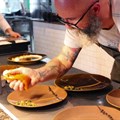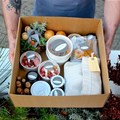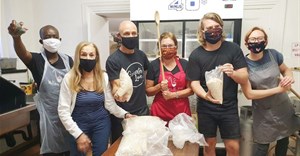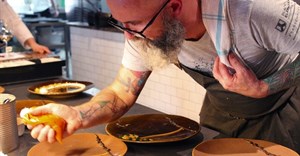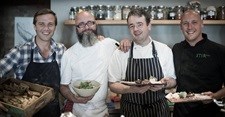
Subscribe & Follow
From culinary rockstar to grocer: The unexpected trajectory of a chef during Covid-19
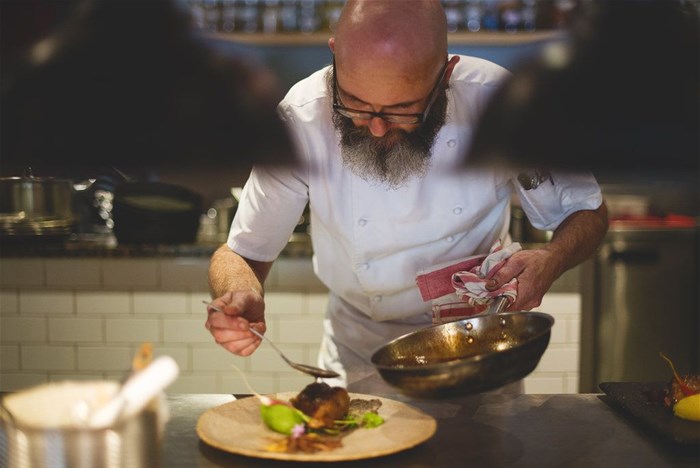
Whatever one may say about fine dining – the pretension, et cetera – these restaurants play a pivotal role in the South African culinary scene. They not only attract the big-spending types of tourists who fly all over the world to eat at buzzed-about spots; they put South Africa on the global radar in a purely positive way. And in a country where coverage about corruption, crime and government malfeasance runs rampant, that is no small thing. As described in a New Yorker profile of the famed American chef Mario Batali: “Celebrity chefs sell more than food; they sell stories.”
Restaurants like Foliage provide employment, facilitate the transfer of valuable skills to younger chefs who then often go on to start their own businesses, and they demonstrate excellence on a global level. And despite the perilous position most restaurants find themselves in now, one can’t imagine a future where all restaurants, including fine dining, won’t again hold worldwide appeal.
The ‘gourmet capital’
Delis and small grocers supporting local community initiatives is a terrific idea, but whether one of those should replace one of the best restaurants in South Africa, I’m not entirely sure about. Erasmus and fellow Franschhoek chef Margot Janse’s efforts during the lockdown to galvanise a collective effort to feed the local community is beyond admirable and continuing to spearhead a system that supports that community post-lockdown is inarguably important. She and Erasmus certainly walk the talk about feeding those who cannot feed themselves and sharing what they know.
But why should that come at the cost of permanently shutting one of the best examples of contemporary South African cooking? A restaurant that is uniformly and consistently highly regarded, popular and successful. One that generates artistry, awards, international exposure and money. Is it not possible to do both?
Erasmus worked with Janse for years at internationally lauded Le Quartier Français. Janse is another wildly exciting and accomplished chef, not to mention an extraordinarily decent human being. At Le Quartier, where she ran the kitchen for 21 years, she was well-known for using indigenous herbs in her food: buchu and kapokbos (indigenous rosemary) among them, and celebrating where that food came from by highlighting it in the cooking techniques.
So it’s no surprise that Erasmus is also big on foraging and using indigenous fynbos in his food, which only adds to the culinary and cultural appeal of Foliage. As Susan Huxter, the former owner of Le Quartier Français said of Erasmus and foraging, “he’s taken it to another level”.

In addition to running Le Quartier, and making the supremely wise decision to hand over the kitchen there to Janse, Huxter was one of the original team whose idea it was to market Franschhoek as “the gourmet capital of South Africa”.
“People will go to a destination purely to eat, and we became one of those destinations,” she said. “You’ve got all these young chefs who do really exciting food. The ingredients you get compared to when we started is different. There’s a food culture; there’s an excitement about food.”
The food capital
In the past couple of years, I’ve been interviewing chefs and restaurant owners for a reporting-oriented take on the development of the restaurant culture in Cape Town, widely considered to be the food capital of South Africa (the Winelands being an extension of the city’s restaurant scene).
Many attribute its start to Italian immigrants. Before they set up shop here, the only places to dine out were tearooms, clubs, hotels and pubs, where an à la carte menu was unheard of. Italians not only pioneered the modern way of eating out in the city, but they also introduced Capetonians to pasta and gelato and espresso: exotic commodities in the Cape Town of the 50s and 60s.
As local cookbook author Phillippa Cheifitz writes in Cape Town Food: “In the 1950s, the Italians introduced cappuccino and lasagna in casual coffee bars to a society that was more familiar with the formality of hotel grill rooms and department store tea rooms.”
But more than the sort of food and drinks they offered, they brought with them a new way of eating and drinking – that quintessential Italian way of socialising, where food turns a meal into a party. As John Dickie writes in Delizia! The epic history of the Italians and their food: “Italian food is city food. Italy has the richest tradition of urban living on the planet, and the enviable way in which Italians eat is part of that tradition.”
By 1976, according to the John Muirs Guide to Cape Town published that year, there were something like 200 restaurants in Cape Town: “I also do not think it is fair to compare South African restaurants to the top restaurants in the international cities. However, you should be able to get good food, well prepared, effective service and an enjoyable atmosphere,” he writes.
The foodie magnet
Well, that certainly is not the case anymore. Cape Town eateries regularly feature on international best restaurants lists and the coverage that follows in the international media is glowing and immeasurable.
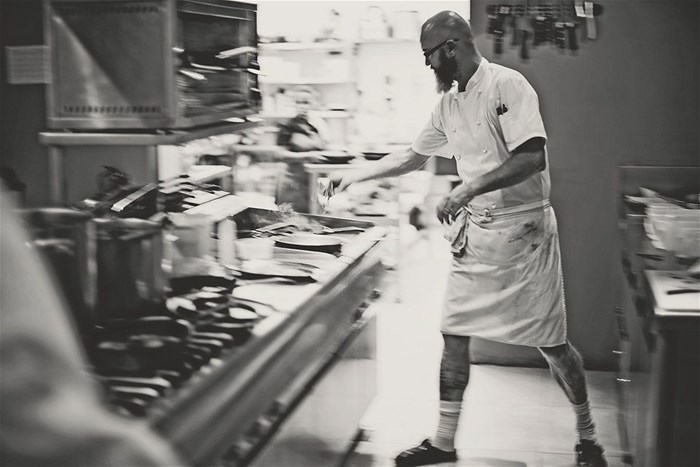
The Test Kitchen is possibly SA’s most well-known fine dining restaurant and a regular item on these lists. “The Test Kitchen is an essential stop for any epicurean exploring the city, and a peerless exemplar of how innovative South African cuisine can be,” according to an article in the British Telegraph newspaper from 2017, after The Test Kitchen made number 63 on the World’s 50 Best Restaurants list that year (in the 51 to 100 category).
The now Johannesburg-based David Higgs, who has put in his fair share of quality time at the helm of award-winning fine dining establishments in Cape Town and the Winelands, said the quality of the food is preeminent in fine dining. “And the awards are judged that way.”
It’s also about more luxury, more attention to personal service and the chef being there, he added. “Taking a Caesar salad and reducing it to one bite – that’s not what it is.” The ambience, temperature, lighting, venue, food and service: you need to get all those things right – “and that’s not easy.”
Another celebrated Franschhoek chef, Reuben Riffel, who opened his first restaurant in 2004 in the Winelands town and now owns restaurants in the Cape and Johannesburg, said the Cape has always attracted more foodie tourists than Jo’burg. “Here we get people that eat out all over the world, so here chefs can experiment and they can do different things,” he said.
From unoriginal, reportedly often unpalatable beginnings in formal dining rooms, restaurant food in South Africa has become a force to be reckoned with on an international scale, populated by sublimely talented individuals such as Janse, Higgs, Riffel and Erasmus.
In a recent interview with Dennis Davis, former finance minister Trevor Manuel described “a very smart restaurant sector” that had developed organically from a time “when you really battled to get a decent coffee shop anywhere in South Africa”, and one that formed an important part of the economy.
“You look at tourism in South Africa: At last count, and this could have been late last year, employed about 1.5 million people in the South African economy, contributed a large sum . . . generally around R250bn give or take contributions to GDP,” Manuel said.
Restaurants are an integral part of that contribution. And what Chris Erasmus does is an integral part of the restaurant scene. For Erasmus and Foliage, not to be a part of that anymore would be a loss to South Africa in more ways than one.







